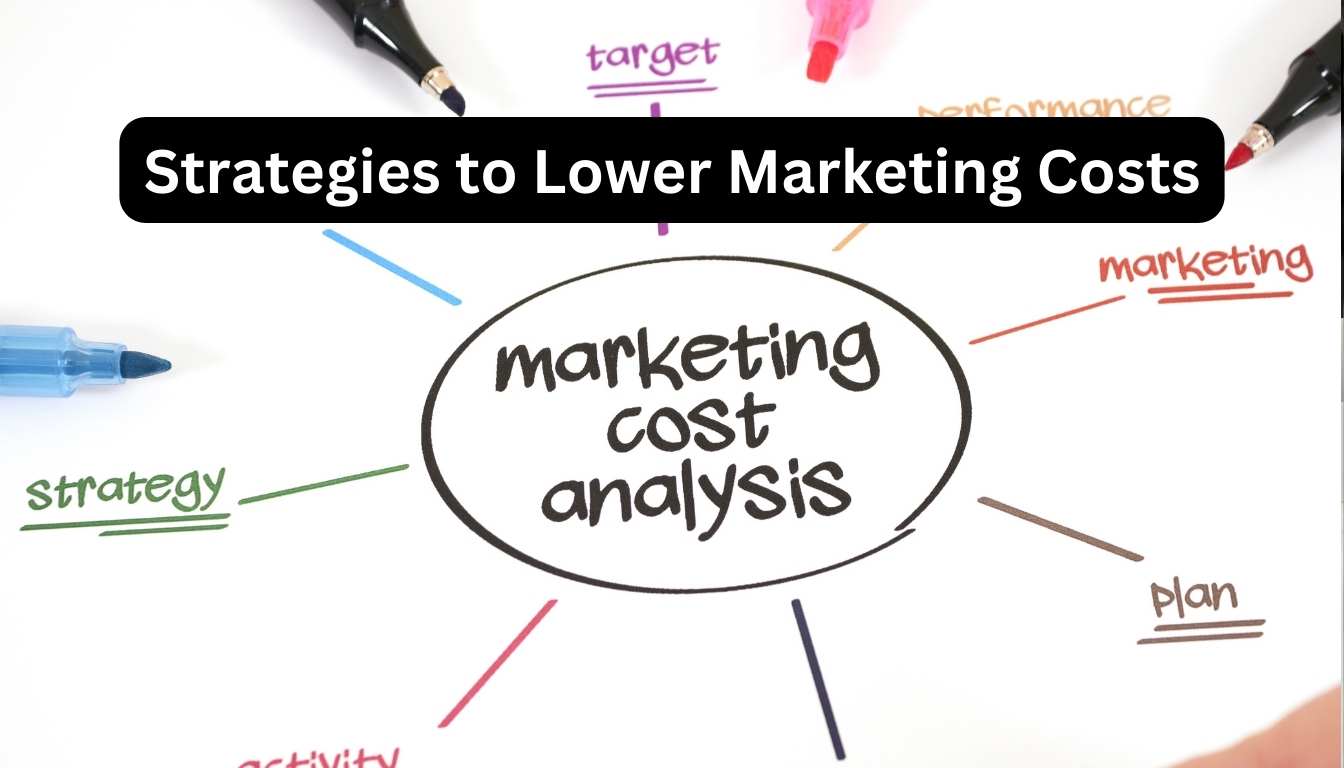In this comprehensive guide, we will explore the dynamics of Product Led Growth (PLG) and Marketing Led Growth (MLG) strategies. We will discuss the benefits of each approach, compare the differences between them, and provide insights into implementing PLG vs MLG strategies. This guide will help you make an informed decision on which growth strategy is best for your business.
Key Takeaways:
- Product Led Growth (PLG) emphasizes the product itself as the primary driver of customer acquisition, retention, and expansion.
- Marketing Led Growth (MLG) relies on marketing efforts to drive customer acquisition, retention, and expansion.
- PLG can be effective in reducing customer acquisition costs and driving long-term customer value.
- MLG can be effective in industries where the decision-making process is influenced by marketing efforts.
- Factors to consider in choosing a growth strategy include industry landscape, size of the install base, potential for referral systems, decision-making process among customers, performance of marketing channels, and readiness for change.
Understanding Product Led Growth (PLG)
Product Led Growth (PLG) is a powerful growth strategy that places the product itself at the center of customer acquisition, retention, and expansion. In this approach, companies prioritize creating a high-quality product that delivers an exceptional user experience.
By focusing on building a superior product, businesses can increase customer satisfaction, foster loyalty, and drive word-of-mouth referrals. A strong emphasis on the product helps create a positive customer journey, leading to higher conversion rates and long-term customer value.
To successfully implement PLG, companies need a deep understanding of their target customers and their needs. This involves optimizing the product to address customer pain points, providing seamless onboarding experiences, and continuously iterating based on user feedback.
One of the key advantages of the PLG model is its ability to reduce customer acquisition costs. By focusing on delivering a compelling product experience, companies can attract customers organically through referrals and word-of-mouth recommendations.
Implementing PLG requires alignment across different teams within the organization, including product development, customer success, and marketing. This cross-functional collaboration is essential to create a product-led culture and effectively execute the PLG strategy.
By prioritizing the product and ensuring a remarkable user experience, businesses can unlock the potential of Product Led Growth (PLG) to drive sustainable long-term growth. With its focus on delivering value through the product itself, PLG offers a distinct advantage over traditional marketing-led approaches.
Next, let’s explore the alternative approach: Marketing Led Growth (MLG). This will provide a comprehensive understanding of the two strategies and help you make an informed decision for your business.
Unpacking Marketing Led Growth (MLG)
Marketing Led Growth (MLG) is a growth strategy that relies on marketing efforts to drive customer acquisition, retention, and expansion. Companies following an MLG approach focus on creating persuasive marketing campaigns, building brand awareness, and engaging customers through various channels.
This strategy requires a deep understanding of the target market, effective messaging, and consistent tracking of marketing performance metrics. By employing data-driven insights, MLG enables businesses to optimize their marketing efforts and achieve measurable results.
MLG can be particularly effective in industries where the decision-making process is heavily influenced by marketing efforts. In these industries, a strong marketing presence is crucial for establishing brand differentiation and capturing customer attention.
Implementing MLG involves developing comprehensive marketing strategies that align with the target audience’s needs and preferences. By crafting compelling messages and using the appropriate marketing channels, businesses can effectively communicate their value proposition and create awareness among potential customers.
Furthermore, MLG allows businesses to leverage a wide range of marketing tactics, such as content marketing, social media advertising, email campaigns, and influencer partnerships. This variety of strategies ensures that companies can reach their target audience through multiple touchpoints, maximizing their chances of conversions and customer engagement.
In contrast to Product Led Growth (PLG), which prioritizes the product itself as the primary driver of growth, MLG places a greater emphasis on marketing efforts and brand promotion. By using well-executed marketing strategies, companies can effectively position themselves in the market and attract a larger customer base.
In the next section, we will explore the factors to consider when choosing between Product Led Growth (PLG) and Marketing Led Growth (MLG), helping you make an informed decision about which growth strategy is best suited for your business.
Factors to Consider in Choosing a Growth Strategy
When deciding between Product Led Growth (PLG) and Marketing Led Growth (MLG), there are several factors to consider. These include the industry landscape, the size of your install base, the potential for referral systems, the decision-making process among your customers, the performance of your marketing channels, and the readiness of your internal structure to adapt to change.
Assessing these factors will help you determine which growth strategy is best suited for your business.
Industry Landscape and Economic Conditions
The state of your industry and the economic conditions can significantly impact the choice between Product Led Growth (PLG) and Marketing Led Growth (MLG). During a recession or when marketing budgets are tight, PLG can be a cost-effective strategy to reduce acquisition costs and maintain customer loyalty. On the other hand, in industries where marketing efforts play a crucial role in decision-making, MLG may be more effective. Assess the current economic conditions and industry trends to determine which approach aligns best with your business goals.
Size of Install Base and User Engagement
The size of your install base and the level of user engagement are critical factors in choosing between Product Led Growth (PLG) and Marketing Led Growth (MLG). If you already have a large install base, focusing on engagement and retention through PLG can be more effective than investing in acquisition through MLG. However, if your install base is small and you have the resources to invest in marketing efforts, MLG may be the better choice. Analyze your current user base and their level of engagement to determine the most suitable growth strategy.
Referral Systems and Word-of-Mouth Recommendations
Product Led Growth (PLG) has the potential to leverage referral systems and word-of-mouth recommendations to drive growth. If your product is already being used by many customers, implementing a referral system can help generate new leads through organic sharing. PLG focuses on creating a positive user experience that encourages customers to recommend the product to others, creating a loop mechanic of customer acquisition. Consider the potential for referral systems and word-of-mouth recommendations in your industry when choosing between PLG and MLG.
Decision-Making Process Among Customers
The decision-making process among your customers is a crucial factor in determining whether Product Led Growth (PLG) or Marketing Led Growth (MLG) is the more appropriate strategy. In industries where purchasing decisions are made by specific stakeholders or decision-makers, MLG may be more effective as it allows for targeted marketing and sales efforts. However, in industries where end-users have more control over the decision-making process, PLG can be the better choice. Consider the decision-making dynamics in your industry to determine the most suitable strategy.
Assessing Marketing Channel Performance
Evaluating the performance of your marketing channels is essential in determining whether Product Led Growth (PLG) or Marketing Led Growth (MLG) is the more effective strategy for your business. Analyze the results of your marketing efforts, not just in terms of acquiring new users but also in terms of retaining them. If your marketing channels are generating low-quality leads and low retention rates, implementing PLG can improve the user experience and drive better conversion rates. Consider the performance of your marketing channels and the quality of leads they generate when choosing between PLG and MLG.
| Factors | Product Led Growth (PLG) | Marketing Led Growth (MLG) |
|---|---|---|
| Industry Landscape | Effective in reducing acquisition costs during recessions or tight budgets | Effective when marketing efforts play a crucial role in decision-making |
| Size of Install Base | Focusing on engagement and retention is more effective | Investing in marketing efforts for acquisition is more effective |
| Referral Systems | Has the potential to leverage referral systems and word-of-mouth recommendations | Less emphasis on referral systems, more focused on persuasive marketing campaigns |
| Decision-Making Process | Effective when end-users have control over the decision-making process | Effective when decisions are made by specific stakeholders or decision-makers |
| Marketing Channel Performance | Focused on user experience and improving conversion rates | Targeted marketing and sales efforts for better lead generation |
Industry Landscape and Economic Conditions
The success of a growth strategy depends not only on the internal factors of a business but also on the external industry landscape and economic conditions. When considering the choice between Product Led Growth (PLG) and Marketing Led Growth (MLG), it is essential to assess the current state of your industry and the prevailing economic conditions.
In times of recession or when marketing budgets are tight, implementing a PLG approach can be a cost-effective strategy. By focusing on the product itself as the primary driver of growth, businesses can reduce acquisition costs and maintain customer loyalty. The emphasis on creating a high-quality product that delivers a superior user experience can create value even in challenging economic times.
On the other hand, in industries where marketing efforts play a crucial role in the decision-making process, MLG may be more effective. This is especially true when there is a need to differentiate the brand from competitors and influence customer behavior through persuasive marketing campaigns.
To make an informed decision between PLG and MLG, it is crucial to analyze the current economic conditions and industry trends. Consider the following factors:
- Economic indicators such as GDP growth, consumer spending, and industry-specific trends
- Competitive landscape and the role of marketing in your industry
- Customer behavior and preferences in relation to product-led or marketing-led approaches
This assessment will provide valuable insights into which growth strategy aligns best with your business goals and the external environment in which you operate.
| Factors to Consider | PLG | MLG |
|---|---|---|
| Recession or Tight Budgets | Cost-effective strategy | Dependent on marketing efforts |
| Competitive Landscape | Focus on product differentiation | Emphasis on marketing campaigns |
| Customer Behavior | Positive user experience drives growth | Marketing influences decision-making |
Size of Install Base and User Engagement
The size of your install base and the level of user engagement are critical factors in choosing between Product Led Growth (PLG) and Marketing Led Growth (MLG). If you already have a large install base, focusing on engagement and retention through PLG can be more effective than investing in acquisition through MLG. However, if your install base is small and you have the resources to invest in marketing efforts, MLG may be the better choice. Analyze your current user base and their level of engagement to determine the most suitable growth strategy.
When considering the size of your install base, it’s important to evaluate the number of active users or customers you currently have. If you have a significant number of active users, implementing PLG strategies can help you leverage their usage to drive organic growth. PLG focuses on creating a seamless user experience that encourages customers to explore and use more features of the product. By focusing on engagement and retention, PLG can help you maximize the value of your existing install base.
On the other hand, if you have a small install base or your product is relatively new to the market, MLG strategies may be more appropriate. With MLG, you can use targeted marketing campaigns to reach potential customers and drive product adoption. By investing in marketing efforts, you can create awareness and generate leads, helping you grow your install base.
When assessing user engagement, consider factors such as how frequently users interact with your product, the depth of their usage, and the level of satisfaction they experience. If you have highly engaged users who consistently use your product and derive value from it, implementing PLG strategies can further enhance their experience and drive word-of-mouth referrals. However, if user engagement is low or inconsistent, focusing on MLG can help you attract new users and improve overall adoption.
Ultimately, the size of your install base and the level of user engagement should guide your decision in choosing between PLG and MLG. Analyze your specific situation, understand your users’ behaviors and preferences, and align your growth strategy accordingly.
| Factors to Consider | Product Led Growth (PLG) | Marketing Led Growth (MLG) |
|---|---|---|
| Large install base | ✓ | – |
| Small install base | – | ✓ |
| High user engagement | ✓ | – |
| Low user engagement | – | ✓ |
Referral Systems and Word-of-Mouth Recommendations
Product Led Growth (PLG) has revolutionized the way businesses generate growth by harnessing the power of referral systems and word-of-mouth recommendations. Implementing a well-designed referral system can unlock a viral loop mechanism that drives exponential customer acquisition. When customers are delighted by your product, they are more likely to share their positive experiences with others, resulting in organic, high-quality leads. This organic sharing not only expands your customer base but also establishes trust and credibility, as people are more likely to trust recommendations from friends and acquaintances than traditional marketing efforts.
In industries where Product Led Growth (PLG) is implemented effectively, referral systems and word-of-mouth recommendations become powerful growth drivers. By creating an exceptional user experience and encouraging customers to share their positive experiences, businesses can tap into the vast network of connections and trust that exists within their customer base. These referrals act as endorsements, attracting new users who are already predisposed to view your product favorably.
Implementing a referral system requires careful planning and execution. It involves creating incentives for customers to refer others, providing them with the tools and resources to share easily, and tracking and rewarding successful referrals. This approach aligns with the core tenets of Product Led Growth (PLG) – delivering exceptional value through your product and empowering your customers to become advocates for your brand.
In contrast, Marketing Led Growth (MLG) relies heavily on traditional marketing channels to acquire new customers. While marketing efforts can be effective in creating brand awareness and generating leads, they often lack the authentic and personal touch of word-of-mouth recommendations. By prioritizing an outstanding product experience and leveraging referral systems, PLG offers a unique opportunity to unlock organic growth and build a community of loyal customers who act as brand ambassadors.
Decision-Making Process Among Customers
The decision-making process among your customers plays a crucial role in determining the most appropriate growth strategy for your business. When comparing Product Led Growth (PLG) and Marketing Led Growth (MLG), it’s essential to consider the dynamics of decision-making in your industry.
In industries where specific stakeholders or decision-makers have the ultimate say in purchasing decisions, MLG might be the more effective strategy. MLG allows for targeted marketing and sales efforts, enabling you to tailor your messaging to key decision-makers in these industries.
On the other hand, if your industry is characterized by end-users having more control over the decision-making process, PLG can be the better choice. By prioritizing the product itself and its user experience, PLG encourages end-users to engage with and advocate for your offering, driving organic growth.
Understanding the decision-making dynamics in your industry is crucial for optimizing your growth strategy. Consider the level of influence that end-users versus stakeholders have in the decision-making process to determine whether PLG or MLG is the most suitable approach for your business.

| Product Led Growth (PLG) | Marketing Led Growth (MLG) |
|---|---|
| Focuses on the product itself as the primary driver of customer acquisition, retention, and expansion | Relies on marketing efforts to drive customer acquisition, retention, and expansion |
| Prioritizes the user experience, leading to increased customer satisfaction and loyalty | Focuses on creating persuasive marketing campaigns and building brand awareness |
| Effective in industries where end-users have more control over the decision-making process | More effective in industries where specific stakeholders or decision-makers make purchasing decisions |
| Reduces customer acquisition costs and drives long-term customer value | Allows for targeted marketing and sales efforts, tailored to key decision-makers |
Assessing Marketing Channel Performance
Evaluating the performance of your marketing channels is essential in determining the most effective growth strategy for your business—Product Led Growth (PLG) or Marketing Led Growth (MLG).
When analyzing your marketing efforts, it’s important to consider not only the acquisition of new users but also their retention. If your marketing channels are generating low-quality leads and struggling to retain users, implementing PLG can be a game-changer.
By focusing on improving the user experience, PLG can drive better conversion rates and increase customer satisfaction. This approach leverages the product itself as the primary driver of customer acquisition and retention.
Take a closer look at the performance of your marketing channels, carefully assessing the quality of leads they generate and the conversion rates they deliver. This evaluation will provide valuable insights into whether PLG or MLG is the best fit for your business.
Importance of Data Analysis
Accurate data analysis is crucial in assessing the performance of your marketing channels. By tracking key metrics such as customer acquisition cost, user engagement, and retention rates, you can gain a comprehensive understanding of the effectiveness of your marketing strategies.
Additionally, utilizing analytics tools can provide valuable insights into user behavior, allowing you to identify areas for improvement and optimize your marketing efforts accordingly.
Make informed decisions based on data-driven analysis to choose the most effective growth strategy for your business. Remember, a thorough evaluation of marketing channel performance is essential when considering Product Led Growth (PLG) vs Marketing Led Growth (MLG).
Conclusion
After examining the dynamics of Product Led Growth (PLG) and Marketing Led Growth (MLG), it is clear that choosing the right growth strategy depends on several factors. Industry conditions, the size of your install base, the potential for referral systems, the decision-making process among your customers, the performance of your marketing channels, and the readiness of your internal structure to adapt all play a vital role in determining the most effective approach.
By assessing these factors and understanding the benefits and differences between PLG and MLG, you can make an informed decision for your business. However, instead of choosing one strategy over the other, consider adopting a hybrid approach. It entails combining the strengths of both PLG and MLG to optimize growth and drive long-term success.
In summary, implementing PLG vs MLG involves careful evaluation and strategic planning. By leveraging the unique aspects of each growth model, you can create a customized strategy that aligns with your business goals and maximizes your chances for success in the competitive market. Keep in mind that the journey to growth is dynamic, and continuous monitoring, adjustment, and experimentation will be necessary to stay ahead of the curve.
FAQ
What is Product Led Growth (PLG)?
Product Led Growth (PLG) is a growth strategy that prioritizes the product itself as the primary driver of customer acquisition, retention, and expansion. Companies that follow a PLG approach focus on creating a high-quality product that delivers a superior user experience.
What is Marketing Led Growth (MLG)?
Marketing Led Growth (MLG) is a growth strategy that relies on marketing efforts to drive customer acquisition, retention, and expansion. Companies following an MLG approach focus on creating persuasive marketing campaigns, building brand awareness, and engaging customers through various channels.
What are the benefits of Product Led Growth (PLG) over Marketing Led Growth (MLG)?
PLG can be particularly beneficial in reducing customer acquisition costs and driving long-term customer value. It also leads to increased customer satisfaction, loyalty, and word-of-mouth referrals.
What are the differences between Product Led Growth (PLG) and Marketing Led Growth (MLG)?
PLG prioritizes the product itself as the primary driver of growth, while MLG relies on marketing efforts. PLG focuses on user experience, while MLG focuses on persuasive marketing campaigns. PLG aims to reduce acquisition costs and drive long-term customer value, while MLG aims to build brand awareness and engage customers through various channels.
How do I implement Product Led Growth (PLG) or Marketing Led Growth (MLG) strategies?
Implementing PLG requires a deep understanding of the customer journey and optimizing the product to meet their needs. MLG requires a deep understanding of the target market, effective messaging, and consistent tracking of marketing performance metrics. The implementation process will depend on your business’s specific needs, goals, and resources.
Which growth strategy should I choose for my business?
Choosing between PLG and MLG depends on various factors such as industry conditions, the size of your install base, the potential for referral systems, the decision-making process among your customers, the performance of your marketing channels, and the readiness of your internal structure to adapt. Assessing these factors will help you determine the most appropriate growth strategy for your business.


